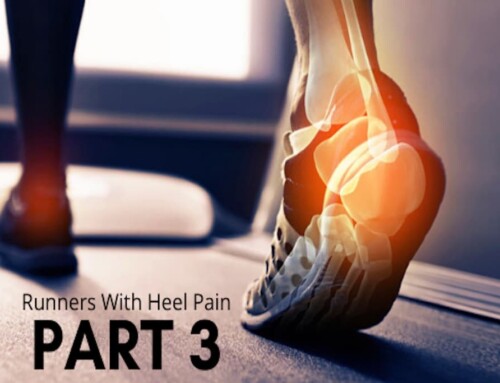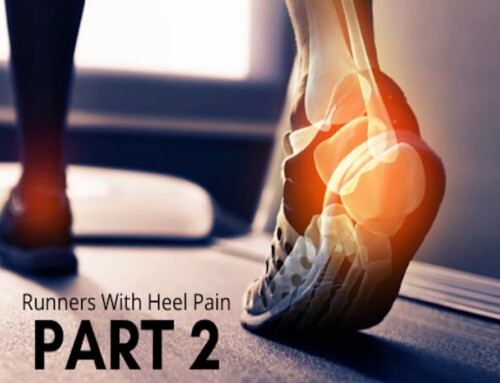A PODIATRIST WITH A CONFESSION
Will you judge me if I say I’m a runner who has experienced a long list of foot injuries? Because I am a Podiatrist, would you think I am incompetent because I fall victim to the same foot conditions and injuries that I treat on a daily basis?
Similarly, when you see a Dietician whose appearance doesn’t conform to what your views are of someone who eats well and stays healthy, will you hesitate to seek advice from them?
Assumptions aside, let’s be clear about one thing; we’re all human and we all have a story to tell. From a service point of view though, knowing what your customer is going through is a powerful thing.
As the saying goes –
“You’d have to walk a thousand miles in my shoes just to see what it’s like to be me!!”…. Pun intended!
So if you are a runner who’s grappling with heel pain or plantar fasciitis, then I totally get it. Having trained for many long distance road and trail events, I have also fallen victim to these injuries.
It’s frustrating seeing your friends run pain-free while you’re stuck at home with an ice pack around your injured foot. You can have a good day and think your foot is improving. You think you’ve ‘rested’ enough, get excited because you think it’s okay to run again, only to find out that after 10-15 mins of running the pain in the heel is back again. You feel defeated because no matter what you try, the pain seems to linger on…
THE MISTAKES I’VE MADE AS A RUNNER
Are you an impatient runner that can put up with a high level of pain? If so, you’re amongst the majority. I need to come clean here because high pain tolerance has been my strength, it was what got me through a 100 mile race. But when it came to recognising whether my pain was a precursor to an injury; that was my weakness because I often ignored those warning signs.
Runners are well known for having high pain tolerance, this is why we can push our limits and boundaries to achieve our PBs and goals. It’s an admirable trait but when it comes to differentiating between good pain and bad pain, us runners sometimes get it wrong. Tissue adaptation during training can hurt and that’s a good thing, usually the pain resolves and runners become stronger for it.
If you experience pain that doesn’t resolve and persists after each run then it’s likely not adaptation but a problem in your training that you need to address. The sooner you address this the better.
Below, I can share with you some of the questions runners with foot injuries may be asking. I’ll try to answer these questions with some of my own advice, as a podiatrist and as a fallible runner myself.
WHEN CAN I RUN AGAIN?
The question that every injured runner wants to know!
It’s impossible to predict how long your pain will take to improve but one thing I can say with certainty is that there is hope!
There are certain factors that determine how long it will take for your pain to resolve. When did your symptoms appear? Was it last week and you’re seeking help early? If this is the case then the prognosis would be much better than if you ignored the pain for weeks and months and only sought help when the pain became unbearable.
Typically tissues take approximately 6-8 weeks to heal and if the right treatment plan is put in place, combined with focused delivery from you – the runner – then it’s quite possible to be back to running with no pain within that time.
So seek help early and understand the cause of your pain so that you can take appropriate action to prevent it from recurring.
WHO SHOULD I SEE FOR MY HEEL PAIN?
I have seen many confused runners who’ve been on a long journey trying to navigate through multiple therapists. They may have received conflicting advice and opinions with regards to treatment of their heel pain.
Once upon a time (approximately >15 years ago) there used to be a great divide between the professions. If you have a foot problem you see a Podiatrist and if you have sore knees, back, neck or shoulders you’d see either an Osteo or Physio. Nowadays that divide is less and runners are confused as who to see for their foot problem.
Could a Podiatrist understand a runner’s mindset and rehab a runner as well as a Physio or Osteo? Yes but not all Podiatrists are attuned to this!
Could a Physio or Osteo know feet as well as a Podiatrist? Maybe, but they don’t deal with feet all day long and know it intimately like a Podiatrist!
So what should you do?
You should know that all therapists will have your very best interests at heart, which is getting you back to doing what you love with no pain.
Admittedly, if you’re a runner with heel pain the first step that I would recommend you do is seek help from a Podiatrist who is also a runner. Dealing with someone who understands your mindset and your injury at the same time will put you in good stead.
If you can’t find that elusive running Podiatrist then the best case scenario is to seek help from a health professional that isn’t afraid to refer you elsewhere if your case is out of their realm of expertise.
HOW WILL MY HEEL PAIN BE TREATED?
With persistence and focus to an individualised treatment plan you can get back to doing what you love sooner. Treatment of your heel pain largely depends on whether it is in the acute or chronic stage. Often a successful treatment plan is one that includes the following steps (sorry, another pun!):
- Sending you off for diagnostic imaging to see the extent of tissue damage in the area
- Modifying any training errors such as the amount and intensity of running that you do to help reduce load on the injured tissue
- Assessing your footwear to see if you’re wearing the correct shoe for your feet
- Assessing your running and walking gait patterns for any biomechanical cause contributing to your heel pain
- Strength and conditioning exercises to address any tissue weakness along the chain that may contribute to your pain
- Conservative treatments such as orthotics, cortisone injections, taping, shockwave therapy, dry needling and foot mobilisation techniques may be used depending on all the above findings.
Treating heel pain is complex in itself, let alone treating heel pain in runners! Many things need to be considered and if you are committed to the treatment plan and can work with your chosen therapist to get you back doing what you love then I think you will win the fight!
If you’re interested in finding out more, I invite you to read Part 2 of my blog on Runners with Heel Pain and Plantar Fasciitis tomorrow, where I’ll delve deeper into the treatments you can try. I will also be sharing what I did that helped me recover from my own heel pain injury.
You can find out more about author and podiatrist, Kim-Ngân Harwood at www.thefootcareclinic.com.au






Leave A Comment